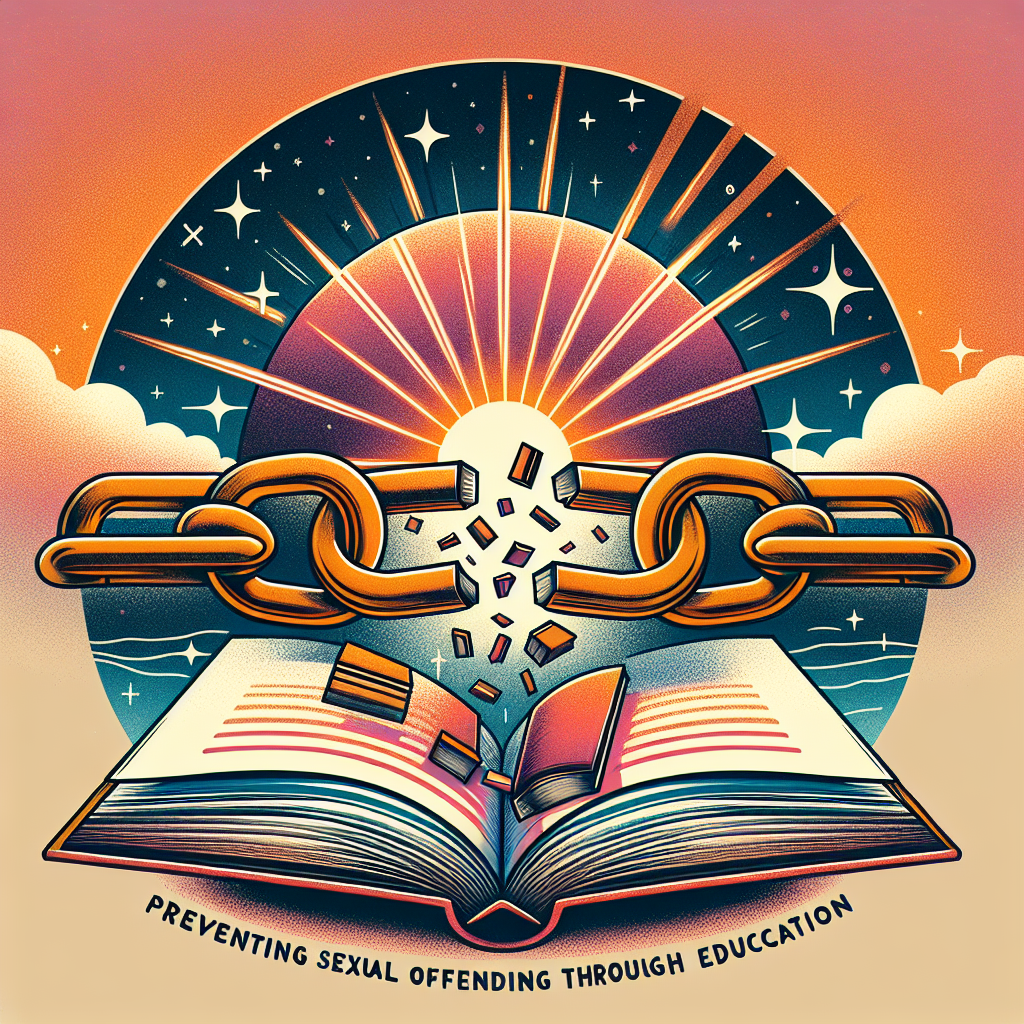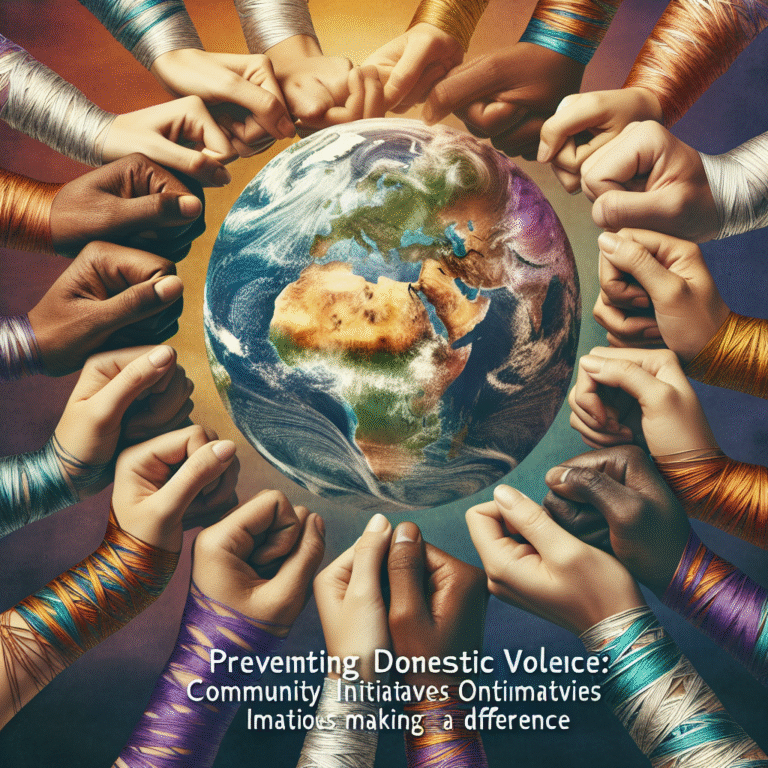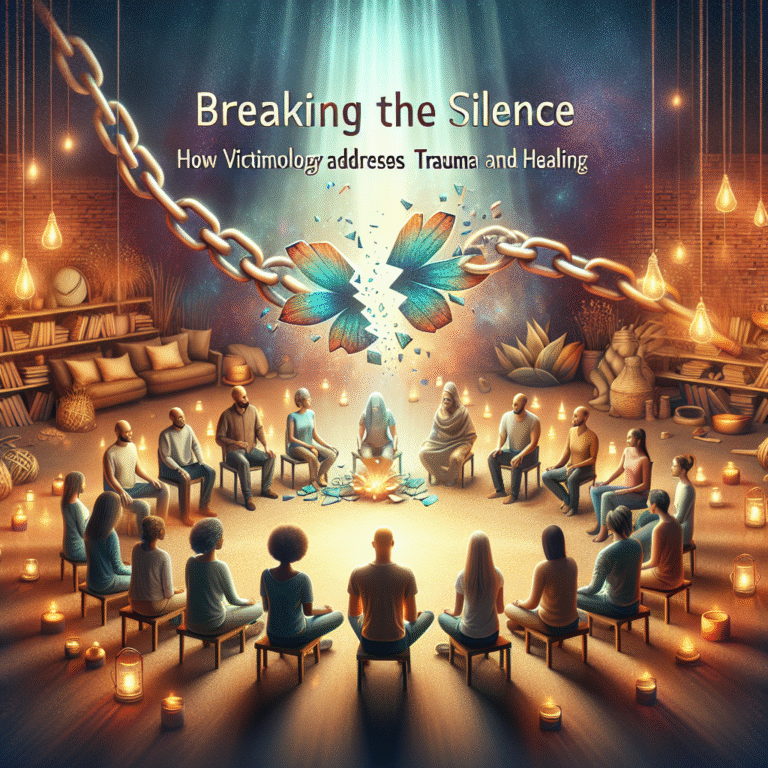
Introduction
In a world where awareness surrounding sexual violence is gaining momentum, one fundamental truth remains: education is key. Breaking the Cycle: Preventing Sexual Offending Through Education is not merely a slogan; it’s a profound need. The statistics are alarming—one in five women and one in 71 men face sexual assault in their lifetimes. Yet, these numbers reflect not just the prevalence of these incidents, but a society that has historically ignored the critical role of proactive education.
In this comprehensive exploration, we will delve into the heart of this pressing issue. We aim to highlight effective educational strategies, showcase case studies that reflect successful applications, and offer actionable insights that everyone can employ to create a safer community.
Understanding Sexual Offending
What Is Sexual Offending?
Sexual offending encompasses a broad range of behaviors—from harassment to assault. Understanding these varied expressions is vital for arming ourselves with the knowledge necessary for prevention.
| Type of Offense | Description |
|---|---|
| Harassment | Unwanted sexual advances or comments. |
| Assault | Physical sexual acts performed without consent. |
| Abuse | Coercive sexual acts that involve power dynamics. |
The Cycle of Abuse
The cycle of sexual offending is cyclical and often perpetuated by learned behaviors in a toxic environment. Recognizing the signals of potential offending and intervening through education can disrupt this cycle.
The Role of Education in Prevention
Early Intervention Programs
Education aimed at children and adolescents can serve as the first line of defense. Programs that teach about consent, personal boundaries, and respectful relationships can have long-lasting effects.
Case Study: The "Safe Dates" Program
The "Safe Dates" program, which targets middle school students, focuses on addressing dating violence and promoting healthy relationships. In a longitudinal study, participants showed a 56% decrease in victimization rates compared to non-participants. This demonstrates the power of early intervention in shaping future behaviors.
Comprehensive Sex Education
Another crucial aspect of Breaking the Cycle: Preventing Sexual Offending Through Education is the integration of comprehensive sex education that transcends mere biological facts.
Effective Components
- Consent Education: Teaching the nuances of consent, including the importance of ongoing communication.
- Bystander Intervention Training: Equipping individuals to safely intervene in situations where they witness inappropriate behavior.
- Cultural Competency: Ensuring that educational materials are inclusive of diverse backgrounds.
Empowering Educators and Parents
Educators and parents play an instrumental role in shaping children’s understanding of sexuality and consent. Workshops and resources can facilitate meaningful conversations at home and in school.
Case Study: Parent Workshops
In a citywide initiative in San Francisco, schools organized parent workshops on discussing consent and boundaries with their children. Post-survey results indicated a 70% increase in parent awareness and confidence in talking about these topics, illustrating the ripple effect of educating adults.
Addressing Myths and Misconceptions
Common Misconceptions
-
“Only ‘bad people’ commit sexual offenses.”
Reality: Many offenders are well-adjusted individuals who may not fit the stereotypical mold. - “Victims provoke their attackers.”
Reality: No one “asks” to be assaulted, and the responsibility always lies with the offender.
Educational Strategies to Combat Misinformation
Implementing informative campaigns that address these myths can drastically change public perception. Schools, community centers, and social media campaigns can serve as platforms for these educational endeavors.
Community and Policy Engagement
Building Collaborative Networks
Creating a community response that includes schools, local organizations, law enforcement, and mental health services is vital. Training programs can unify these entities to tackle the issue collaboratively.
Chart: Collaborative Community Model
| Stakeholder | Role |
|---|---|
| Schools | Implement educational programs. |
| Law enforcement | Train officers on sexual offense dynamics. |
| Mental health services | Provide resources for survivors. |
| Community organizations | Advocate for policy change. |
Legislative Action
Advocating for policies that support education in schools and community programs is essential. Policies supporting funding for prevention programs can directly reduce the incidence of sexual offending.
The Impact of Technology
Utilizing Digital Platforms
With the rise of digital technology, educators can leverage online platforms to enhance education surrounding sexual violence.
Case Study: The “Consent is Everything” Campaign
This campaign used social media to disseminate information about consent. Engaging infographics, video challenges, and interactive quizzes drove a staggering 85% increase in digital engagement, showcasing technology’s potential to instigate change.
Conclusion
Breaking the Cycle: Preventing Sexual Offending Through Education is not a far-fetched ideal but an achievable reality. Education empowers individuals, dismantles harmful stereotypes, and fosters a culture of respect and understanding. By investing in educational strategies and community collaboration, we can curtail the prevalence of sexual offenses and create a safer environment for all.
As we move forward, let this be a rallying call for commitment to education and advocacy. Together, we can break the cycle.
FAQs
1. What age should sexual education begin?
Sexual education should begin in early childhood—teaching children about consent and body autonomy in age-appropriate ways.
2. How can parents talk to their children about consent?
Parents should create an open dialogue, using everyday situations to teach about consent, boundaries, and respect.
3. Are there online resources for sexual education?
Yes, various reputable organizations provide free online resources aimed at different age groups, including the “Stop It Now” and “RAINN” websites.
4. How can schools implement effective sexual education programs?
Schools can collaborate with local organizations to design curricula that include consent, healthy relationships, and bystander intervention.
5. What role do community organizations play?
Community organizations can offer workshops, distribute educational materials, and advocate for policy changes that promote sexual violence prevention in local areas.
In conclusion, education is a potent tool in Breaking the Cycle: Preventing Sexual Offending Through Education. By continuing to engage, educate, and advocate, we can work towards a future free from sexual violence.


















